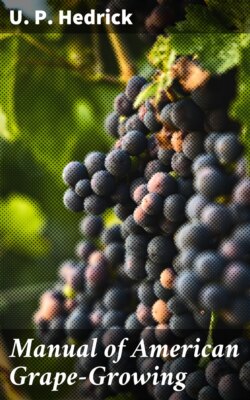Читать книгу Manual of American Grape-Growing - U. P. Hedrick - Страница 33
На сайте Литреса книга снята с продажи.
The ideal soil.
ОглавлениеGrapes may be well grown in a wide range of soils if the land is well drained, open to air and if it holds heat. But without these essentials, whatever the soil, all subsequent treatment fails to produce a good vineyard. Generally speaking, the grape grows best in a light, free-working, gravelly loam, but there are many good vineyards in gravelly or stony clays, gravel or stone to furnish drainage, let in the air and to hold heat. Contrary to general belief, the grape seldom thrives in very sandy soils unless there is a fair admixture of clay, considerable decomposing vegetable matter and a clay subsoil. The latter, however, must not come too close to the surface. Some of the best vineyard lands in the country are very stony, the stones hindering only in making the land difficult to till. Nearly all grapes require a friable soil, compactness being a serious defect. Virgil, writing in Christ's time, gave good advice as to soil for the vine:
"A free loose earth is what the vines demand,
Where wind and frost have help'd the lab'rer's hand,
And sturdy peasants deep have stirr'd the land."
Cold, churlish, sticky or clammy clays are never to the liking of the grape.
Great fertility is not necessary in grape lands. Indeed, the grape is conspicuous among cultivated plants for ability to nourish itself where the food supply is scant. Soils naturally too rich produce an overgrowth of vine, the season's wood does not mature, the crop does not set, and the grapes lack sugar, size, color and flavor. Good physical condition and warmth in a well-watered, well-aired soil enable the grape to search far and wide for its food.
